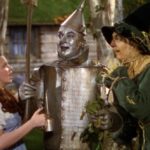 Miscellaneous
Miscellaneous  Miscellaneous
Miscellaneous  Our World
Our World 10 Green Practices That Actually Make a Difference
 Humans
Humans Ten Historic Men Who Deserve Way More Credit Than They Got
 Movies and TV
Movies and TV The 10 Most Heartwarming Moments in Pixar Films
 Travel
Travel Top 10 Religious Architectural Marvels
 Creepy
Creepy 10 Haunted Places in Alabama
 History
History Top 10 Tragic Facts about England’s 9 Days Queen
 Food
Food 10 Weird Foods Inspired by Your Favorite Movies
 Religion
Religion 10 Mind-Blowing Claims and Messages Hidden in the Bible Code
 Facts
Facts 10 Things You Never Knew about the History of Gambling
 Miscellaneous
Miscellaneous Ten Groundbreaking Tattoos with Fascinating Backstories
 Our World
Our World 10 Green Practices That Actually Make a Difference
 Humans
Humans Ten Historic Men Who Deserve Way More Credit Than They Got
Who's Behind Listverse?

Jamie Frater
Head Editor
Jamie founded Listverse due to an insatiable desire to share fascinating, obscure, and bizarre facts. He has been a guest speaker on numerous national radio and television stations and is a five time published author.
More About Us Movies and TV
Movies and TV The 10 Most Heartwarming Moments in Pixar Films
 Travel
Travel Top 10 Religious Architectural Marvels
 Creepy
Creepy 10 Haunted Places in Alabama
 History
History Top 10 Tragic Facts about England’s 9 Days Queen
 Food
Food 10 Weird Foods Inspired by Your Favorite Movies
 Religion
Religion 10 Mind-Blowing Claims and Messages Hidden in the Bible Code
 Facts
Facts 10 Things You Never Knew about the History of Gambling
10 Intriguing Theories That Change How You See Your Favorite Movies
Crazy movie theories are practically an Internet cottage industry. For every new release, there are about two dozen theories arguing why the main character has to be dead or imagining everyone else. Generally, these theories are like your standard blockbuster: fun but ultimately forgettable.
But not every crazy theory can be dismissed so easily. Because of clues in the background, some are eerily plausible. Occasionally, they even wind up improving the movie.
10The Big Lebowski Is Based Around The Tarot Deck

Originally released in 1997 to unanimous disappointment, the Coen Brothers’ film-noir pastiche The Big Lebowski is now considered a masterpiece. A large part of its status is due to the multiple ways it can be interpreted. People have called it everything from an updating of Alice in Wonderland to a warning about 9/11. Another theory, from the guys at the Lebowski-dedicated website Dudeism.com, says the flick was inspired by the Tarot deck.
Jeff Bridges’s naive hero/loser the Dude can be seen as the Fool, a card simultaneously blundering and adept. In the wordplay-loving Rider-Waite deck, the Fool is depicted as about to fall off a cliff. In The Big Lebowski, the Dude literally and metaphorically falls over and off things, until by the third act, pretty much every scene ends with him at gravity’s mercy. He also displays the same child-like interest in the world as the Fool, especially in the dream sequences.
John Goodman’s paranoid Vietnam vet Walter is Justice, dispensing gun-based judgments at the bowling alley. Steve Buscemi’s Donny is the Star, as symbolized by the star on his urn. The Dude’s car is the Chariot, the wealthy Big Lebowski the Emperor, pornographer Jackie Treehorn the Devil, and John Turturro’s crazy Jesus the Moon (lunar being linked to “lunatic”).
If true, this means all the characters are intended to be ancient archetypes transported to 1990s Los Angeles, hence the repeated comments in the movie about people being “right” for their time and place.
9Groundhog Day Is About Psychoanalysis

A 1993 comedy about a man forced to relive the same day over and over again, Groundhog Day is a cult favorite for both its implied darkness and liberal use of Bill Murray. But some critics think something deeper is at work. According to several experts in the field, Groundhog Day is a perfect metaphor for psychoanalysis.
One of the main aims of psychoanalysis is to help patients recognize the negative repeating patterns in their lives and find a way to overcome them. In Groundhog Day, this becomes literal reality. Everyone around Bill Murray acts in the exact same way every single day, and only when Murray’s character changes the way he responds to these patterns is he’s freed from his purgatory and able to move on.
The theory is bolstered by Murray’s character being such a jerk at the start of the film. In academic parlance, he’s trapped by his narcissistic defenses. By the end, he’s learned to lower those defenses and care about other people. He even falls in love, the sort of ideal patient outcome professional psychiatrists crave. In a 2006 essay, the respected International Journal of Psychoanalysis claimed his character’s journey perfectly symbolized “the redemptive, reparative possibilities in every life.”
8The Incredibles Is Objectivist Propaganda

The Incredibles is an animated film about a family of superheroes, while Atlas Shrugged is a 560,000-word screed against the dangers of big government. Scratch the surface, though, and similarities appear. The Incredibles seems designed to mimic Ayn Rand’s objectivist philosophies.
For starters, the basic plots are eerily similar. In Atlas Shrugged, the leaders and geniuses of the world go on strike after equality-obsessed judges allow them to be sued. In The Incredibles, the world’s superheroes go into retirement after Mr. Incredible is sued for saving a suicidal man. In both cases, the result is a world run by the mediocre and incompetent who will soon need saving from themselves. Ideologically, the two also complement one another. Ayn Rand’s argument was that the naturally gifted should be allowed to exercise their talents and be recognized as our superiors. In The Incredibles, the villain’s evil scheme is to give everyone superpowers, making the entire world equal.
Plenty of visual references back the theory up. At one point, Mr. Incredible hoists a globe-shaped robot on his shoulders, mimicking Atlas holding the world.
7Aladdin Is Set In A Post-Apocalyptic Future

Robin Williams’s turn as the Genie in Aladdin is the benchmark for all Disney performances. However, it also causes some internal continuity problems. At different times, Genie impersonates Jack Nicholson, Groucho Marx, and Arnold Schwarzenegger (among others). Since Aladdin is set around the time of the Arabian Nights, it should be impossible for Genie to mimic people who haven’t been born yet—unless our dating of Aladdin is way off, and the movie is really set in a distant future.
The theory comes from a throwaway line that indicates Genie spent the last 10,000 years trapped in his lamp. Since he recognizes third-century clothes, he must have been imprisoned sometime after they became fashionable. Combined with his knowledge of 20th-century celebrities, that means the earliest Aladdin could take place is around the year 11,970. But where are the flying cars and spaceships? They’ve all been wiped out in a nuclear exchange.
You’ve never heard of Agrabah before because it’s a corruption of “Arabia.” The flying carpet and Iago the talking parrot are the products of advanced technology, now seen by descendants of the survivors as akin to magic. People praise Allah but never visit a mosque because only fragments of Islamic culture have survived. It’s kind of like Cormac McCarthy’s The Road, only with more singing.
6Willy Wonka Knew The Children Would Meet A Grisly Fate

Willy Wonka and the Chocolate Factory is one of the strangest children’s films in history. Gene Wilder’s Willy Wonka seems less like a lovable eccentric and more like a madman guarding a dark and dangerous secret—which he might well be. According to one popular theory, Wonka knew in advance that most of the children to visit his factory would meet terrible fates.
At the start of the movie, Wonka takes the five lucky kids to see his chocolate waterfall. Overweight German Augustus Gloop greedily tries to drink from it, and he nearly drowns. With Augustus and his mother out of the picture, the remaining kids hop on a boat and sail away into another nightmare adventure. There’s no sign of the two vacant seats where Augustus and his mother should have sat. Instead, the boat is built specifically to hold four children and their guardians. Later, the remaining kids (now down to two, plus guardians) hop in another vehicle. Once again, it has only as many seats as there are kids left.
This theory gets even more disturbing when you realize the film (unlike Roald Dahl’s book) never explicitly states whether the children live or die. Potentially, you have a film about a series of pre-planned murders, making Willy Wonka a serial killer.
5Terry Gilliam’s Dream Trilogy Represents Imagination Growing Up

Starting with Time Bandits in 1981, Terry Gilliam delivered three films that blur the lines between fantasy and reality. Time Bandits features a kid who slips into an imaginary realm. Brazil features a young man who fantasizes about being a mythical hero. The Adventures of Baron Munchausen features an old guy making up fantastical stories. All three expressed the importance of imagination. According to one theory, the trilogy was designed to show how our imagination changes as we get older.
The idea is that each installment represents imagination at a different juncture in our lives. So Time Bandits is your imagination as a child: overwhelming, leaping from one idea to another, and filled with magic. Brazil is your imagination as a young adult: more focused and closely related to your real life. Baron Munchausen is finally your imagination when you get old: a bunch of tall tales about your life, along with how you can pass that imagination on to someone younger.
Taken as a whole, they show your imagination growing up, with Baron Munchausen bringing things full circle through a young girl at the end.
4Grease Is The Dying Fantasy Of A Drowning Woman

A teen musical starring a pre-Scientology John Travolta, Grease has left some looking for its dark underbelly. A weirdly convincing theory doing the rounds says that Grease takes place entirely in the head of a drowning Olivia Newton John.
The theory takes its cue from Grease’s ridiculous ending. Just in case you wiped it from your mind, the final song ends with John Travolta’s Danny and Olivia Newton John’s Sandy getting in a car. The car then takes off and flies away into the sky. Since the rest of the film ostensibly takes place in the real world (albeit a version where teenagers break into choreographed song and dance routines), this fantasy ending sticks out. It’s almost begging to be interpreted, and some think the only interpretation is that Sandy’s on her way to heaven.
Earlier in the film, we learn Danny and Sandy first met at the beach when Sandy nearly drowned. The theory suggests this is the only real part in the whole of Grease. Sandy’s oxygen-starved brain creates an elaborate fantasy about the boy who tries to save her, one that gets increasingly strange as the film progresses and her body shuts down. At the very end, she loses her fight for life and heads off to heaven, the flying car being the only way she can interpret the sensation within her fantasy.
3Doctor Who Is A Buddhist Allegory

Like most sci-fi and fantasy shows, Doctor Who regularly borrows religious imagery, to the extent that one episode featured the 10th Doctor literally being carried around by angels. Yet rather than being a vague Christian allegory with its central messiah figure, Doctor Who may have more in common with another global religion.
In the 1970s, Barry Letts took over as executive producer, shaping the adventures of the Third Doctor. A practicing Buddhist, Letts wove his faith into the fabric of the show. The concept of regeneration, whereby the Doctor cheats death by changing his appearance, was directly inspired by Buddhist teachings on reincarnation, and one episode featured the Third Doctor explicitly discussing how his youth was influenced by a Buddhist tale.
The Buddhist themes continued even after Letts quit the show. In the 1980s, for example, the Fifth Doctor had several adventures that explicitly tied his story to Buddhism. Even the revived 2005 version of the show arguably continues this tradition. The ninth and 10th Doctors have story arcs overtly focused on how everything dies—a teaching that lies at the very heart of Buddhism.
2Blade Runner’s Deckard Has Another Character’s Memories

The story of Rick Deckard, a detective who hunts violent human androids, Blade Runner is today most famous for its twist ending. In a heavily ambiguous scene, the movie hints Deckard is himself an android, or “replicant.” At least, it was ambiguous until Ridley Scott confirmed the interpretation in 2014. But if Scott thought his announcement would end the speculation, he was wrong. It only added fuel to a rumor about supporting character Gaff.
A lean, mustachioed guy who walks with a cane, Gaff turns up in several key scenes without having any apparent function. All he ever does is act surly around Deckard, make origami animals, and turn up too late at the climax to stop Deckard nearly being killed. So why did Scott stick him in the film? The theory says Gaff is the source of Deckard’s memories.
Excluding Deckard, the only replicant we meet who is unaware of their status is Rachel. Since Rachel has someone else’s memories, it stands to reason Deckard would, too. In this case, that someone else was Gaff. A former replicant-hunter, Gaff retired when he suffered the injury requiring him to walk with a cane. Rather than lose their best detective, the higher-ups simply took Gaff’s knowhow and implanted it into Deckard.
The theory explains why Gaff is so surly around Deckard and why he accompanies him everywhere. It also explains how Gaff knows Deckard has been dreaming about unicorns. Most impressively, it makes sense of Gaff’s line after Deckard survives his climactic encounter with Roy: “You’ve done a man’s job.” In Gaff’s eyes, saying a replicant had done as well as a man would be the ultimate compliment.
1E.T., Star Wars And Indiana Jones Take Place In The Same Universe

What do the stories of an evil Galactic Empire, an archaeologist with a whip, and a bicycle-levitating alien all have in common? If you answered “Spielberg and Lucas,” you’re only half-right. They might also all take place in the same universe.
One section in E.T. involves the kids taking the little alien out trick-or-treating. In a throwaway gag, E.T. sees a child in a Yoda mask approach and tries to follow him shouting “home!” George Lucas liked the scene so much that he promised Spielberg to put E.T. in his next Star Wars film—an empty gesture since Return of the Jedi was already nearly finished. But George Lucas apparently has a long memory. When The Phantom Menace was released in 1999, he included a shot of E.T.-style aliens in the Galactic Senate. Obsessive fans tried to unpick the continuity implications, and things quickly went nuts.
Another Spielberg-Lucas film, Raiders of the Lost Ark, features quick glimpses of C3PO and R2D2 as hieroglyphics. Viewers decided this meant they all had to be taking place in the same universe. Their conclusion: aliens.
Indiana Jones and the Crystal Skull reveals that aliens came to Earth long ago. The theory says they brought with them the legends of their galaxy, including the ones that would become the basis for Star Wars. These stories got so absorbed into humanity’s collective subconscious that George Lucas eventually turned them into the movies we know and love (and, in the case of Phantom Menace, hate). In 1982, E.T. crash-lands on a planet that has turned a face he knows (Yoda’s) into a toy mask—sort of like if you went to Mars and found a bunch of aliens dressed as Lincoln.
It might sound crazy, but it beats any explanation we could come up with.








